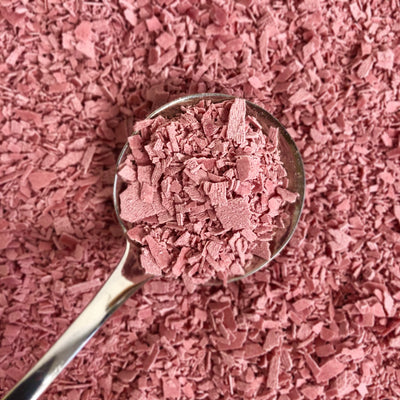Indonesia Kerinci Baroka
Origin: Sumatra, Indonesia
Process: Anaerobic Honey
Producers: Koerintji Barokah Bersama Cooperative
Grown: Gunung Tujuh in Kerinci, Sumatra
Altitude: 1400-1500 metres
Varietals: Andung Sari and Sigarar Utang
Cupping Score: 88
Tasting Notes:
This lot is a complex coffee, bursting with citrus and tropical fruit, dark chocolate, caramel, and hints of red wine.

Brew Guide:
V60 and AeroPress
AeroPress
Steep
Fine to medium grind
15g to 240ml water
91-96 ℃
2-3 minutes
Pour Over
Drip
Medium Grind
30g to 500ml water
91-96 ℃
2-4 minutes
Roast Info:
Light to medium
Farm Info:
Bersama, a cooperative made up of 320 members, who farm in on a plateau that sits at the foot of Mount Kercinci, Southeast Asia’s tallest volcano and also one of Sumatra’s most active, part of the infamous Pacific Ring of Fire.
The rich volcanic soil nurtures and nourishes the surrounding jungle, which is a wildlife paradise, brim full of rare flora and fauna, including Crested Wood Partridge, Geckos, Long-tailed Macaques, Yellow-handed Mitered Langurs, Javanese Edelweiss, Schneider’s Pitta bird and Nepenthes, a carnivorous plant also known as monkey cup or pitcher plant.
Almost all of the farms on the island of Sumatra are small, on average, between 0.5 to 2.5 hectares. Coffee is usually the primary cash crop for farmers, but most also intercrop their trees alongside vegetables, potatoes and fruit. This intercropped produce is a substantial part of each family’s diet for the year. The farms in this region are planted with older Typica types as well as disease resistant hybrids, and benefit from the high slopes, situated between 1400 - 1500 meters above sea level.
In addition to growing coffee as a cash crop, many smallholder farmers also work as hired labourers at nearby tea plantations. Like coffee, tea is a huge cash crop in the region.
There are more and more initiatives by farmers on Sumatra to organize themselves into cooperatives. In the past, farmers did not have much leverage to get better prices for their cherry or parchment. In cooperatives, they share resources, organise training and are able to negotiate better prices for their crops.
At the end of the year, the Bersama cooperative reinvests any profits they make either in further infrastructure to increase production quality or shares them out as a premium with the member producers. As part of a Farm Gate Initiative farmers also receive expert technical support and free shade tree seedlings to plant around their farms, part of a donation made from each sack of coffee purchased by the buying company.
Processing Info:
During the harvest season, coffee is hand-picked. Usually, most labour is supplied by the immediate family. After picking, the coffee is delivered to one of nine collection centres owned by the cooperative, where coffee cherries are purchased by the cooperative and they are then processed and washed, before being taken to a central milling facility. To streamline the operation even further, an agriculturalist is located at each collection station to provide technical assistance and ensure that the same procedures are used to process cherry at each location.
With this Anaerobic Honey lot, coffee is first floated and separated by density before being laid on raised beds where workers remove under-ripe, over-ripe and damaged cherry. Then, the ripe cherry is collected before being sealed in airtight, 20kg bags, which are then stored in a cool, dry location (with temperatures between 18 and 22 degrees Celsius) for seven days.
After seven days, the cherry is pulped and then laid out on raised beds to dry, located in domed open sided buildings that protect the coffee from rain and harsh sunlight. The parchment is left to dry for between 20 to 23 days, after which the coffee is then milled and sorted by hand before being sold to the cooperatives preferred buyer.
Coffee Country Info:
Indonesia has a long history of coffee production which started in 1699, when Dutch traders and colonists brought plants to the Indonesian islands from Yemen, the climatic and soil conditions were ideal, and the crop flourished rapidly propelling the region to the top of the charts in terms of global coffee production with the first exports to Europe in 1711 by the Dutch East India Company.
Trade took off too and Indonesia became the most important coffee producing region in the world until Brazil surpassed it in the middle of the 19th century. By the mid-1870s the Dutch East India Company expanded the number of Arabica coffee-growing areas to include Sumatra, Bali, Sulawesi and Timor.
Disaster struck in the late 19th century in the shape of coffee rust disease, which meant they were forced to introduce disease resistant Robusta varieties which where the most predominant coffee plants available by 1915 and by 1920 in the case of Sumatra.
However, the demand for the unique flavour profile provided by Sumatran grown Arabica coffee led to a revival in the early 20th century as farmers began to grow those varietals again, this time utilising modern growing techniques alongside more traditional methods and using disease resistant plant varieties.
Sumatra’s journey to becoming a global coffee sensation is certainly testament to Indonesian determination and resolve and to the high-quality product produced on the island.





